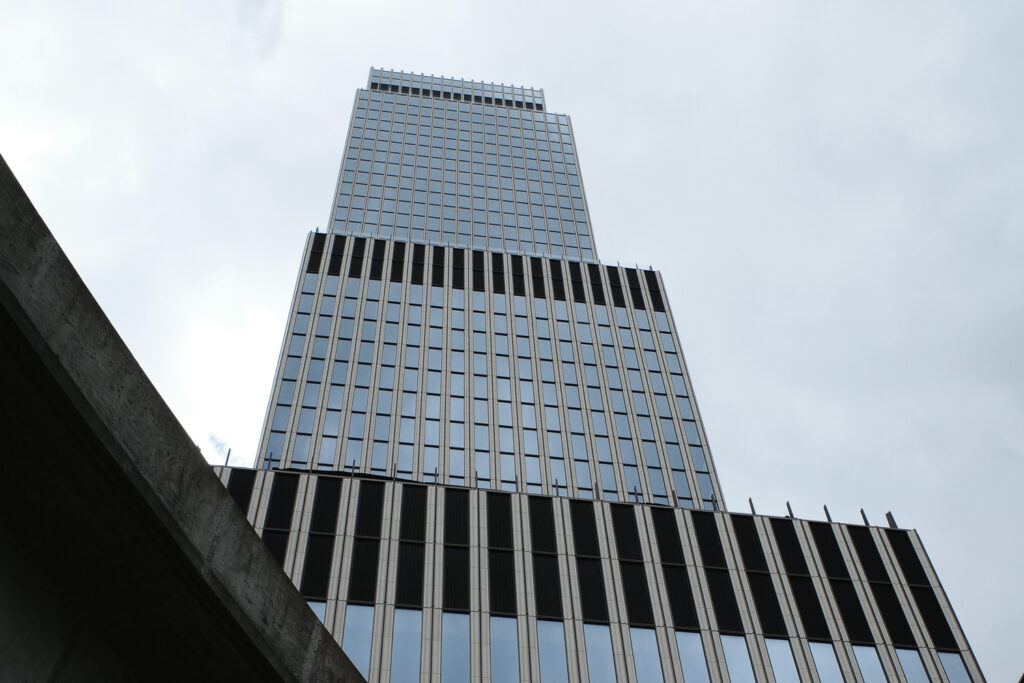Detroit — The city’s newest skyscraper sticks out like a sore thumb, but it looks and feels more like a middle finger. Compared to its art deco neighbors, Hudson’s Detroit represents a complete departure from the most iconic elements of Old Detroit.
Say goodbye to the intricate craftsmanship of buildings like the Book Tower, adorned with Romanesque sculptures, and say hello to sharp, monotonous angles.
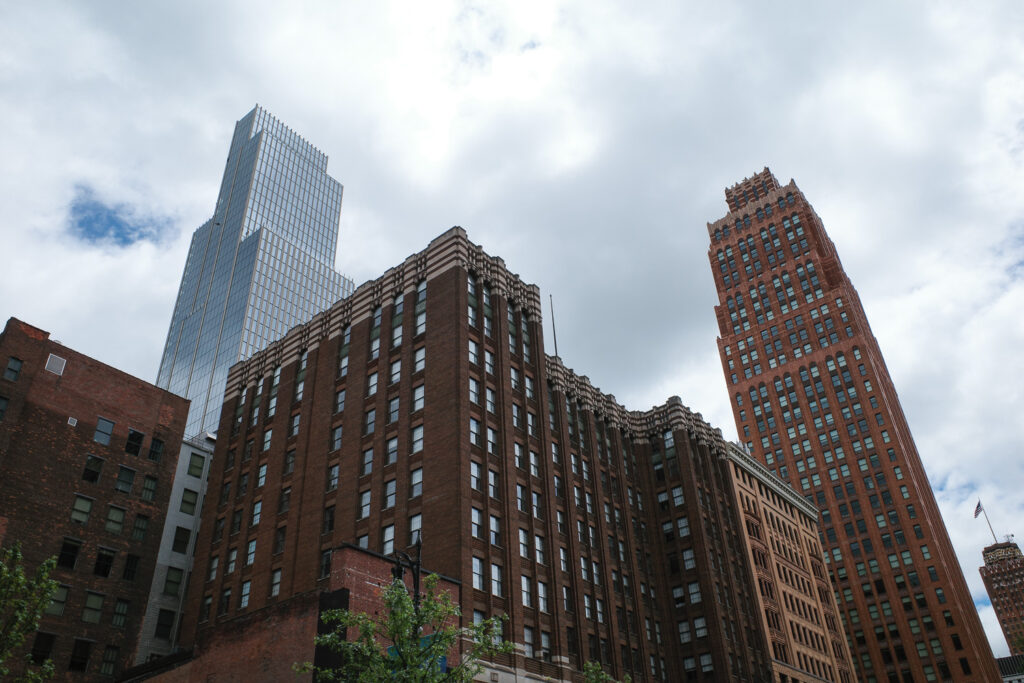
The architects behind the new Hudson building, SHoP Architects, proudly present their vision for the future. Their website states: “Our work is in the future.”
Well, if the new Hudson is any indication, that future seems boring and dominated by glass walls, a design style that is becoming all too familiar across American skylines.
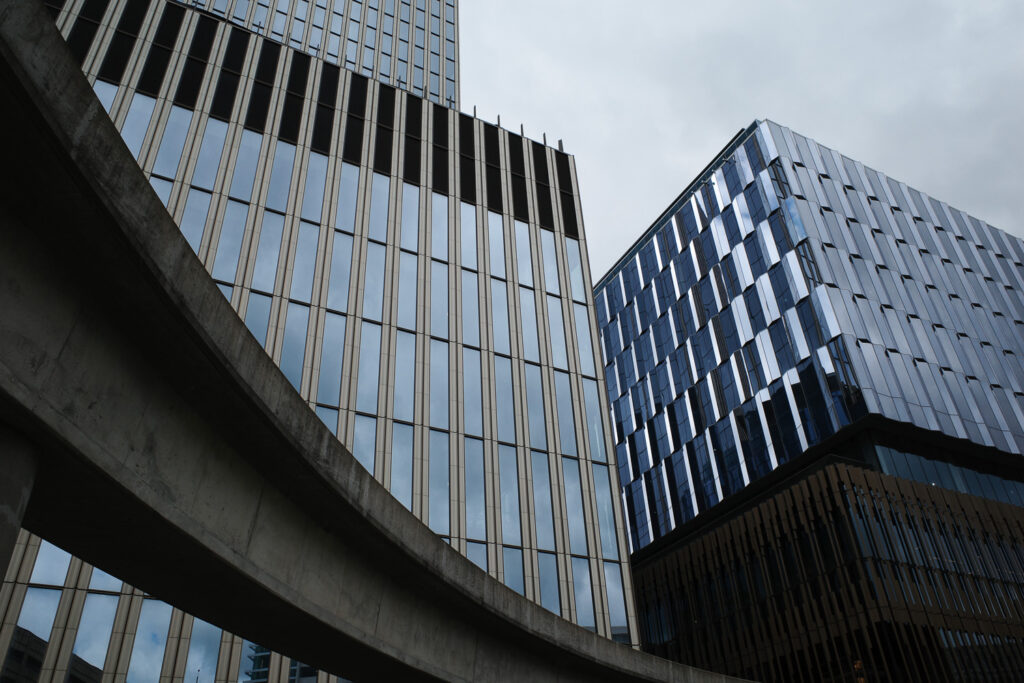
The original J.L. Hudson Department Store, which stood on the site of the new Hudson building, carved a legacy in Detroit. Many older Detroiters can probably recall spending a Saturday browsing the department store for Christmas presents on one of its 25 stories.
Some may even remember the department store’s Big Flag, proudly flown each Armistice Day from 1923 until 1976 and recognized as the largest American flag in the world. Opened in 1911, the J.L. Hudson Department Store was the tallest in the world and boasted a record 705 fitting rooms.
The building was a product of a truly heroic story of one businessman’s courage in the face of economic panic. Joseph Lowthian Hudson was a men’s clothing store owner along with his father when hard times hit. After falling into bankruptcy and mounds of debt during the Panic of 1873, Hudson used his last dollars to open a department store on the ground floor of the old Detroit Opera House.
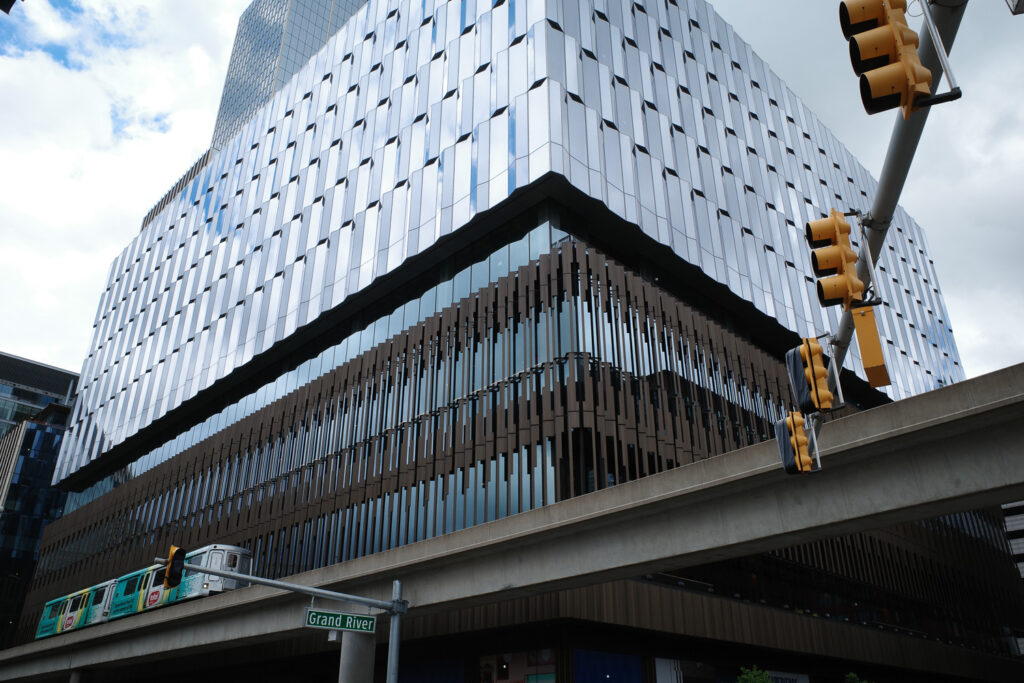
After finding some success early and paying off his debtors with interest, he was able to purchase the first piece of what would become his famous department store in 1891. At its most successful in 1954, the store was doing $163 million ($1.28 billion today) in sales. With the immense income came a series of expansions that would eventually lead to the department store as it was in 1998. After a series of failed pitches to redevelop the old building, the department store was famously demolished.
“With a deafening roar that will echo in the hearts of Detroiters for decades, the Hudson’s building was blasted to the ground—ending one era and beginning another in 30 ground-shaking seconds,” wrote The Detroit News.
“A symbol of glamor for three generations, a symbol of decay for another, the mammoth structure wobbled like a drunk, hesitated, then collapsed into a 60-foot-high pile of rubble—coating downtown streets with a fine gray dust.”
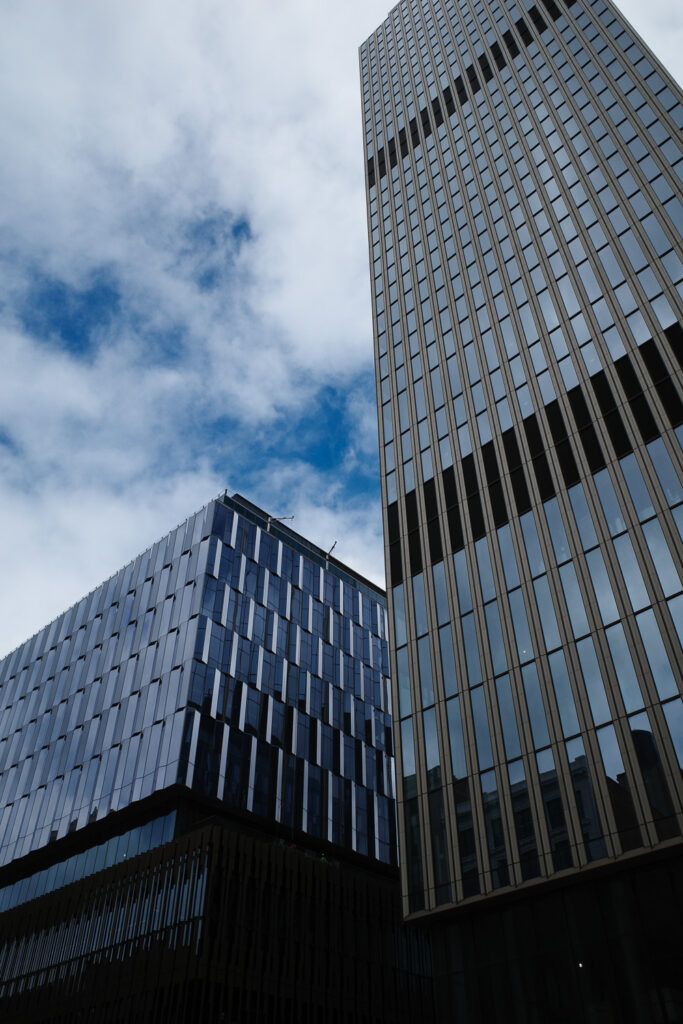
With the demolition complete, the new era will be defined by anonymous glass towers. New York once had the spire of the Empire State Building, a defining symbol of America for generations. Chicago had the neo-Gothic arches of the Tribune Tower, lending the city an almost cathedral-like aura. Detroit had the glorious Art Deco design of structures like the Guardian and Fisher Buildings.
In chasing the future, Detroit may have forgotten what made its skyline worth remembering. The new Hudson building, sleek and soulless, stands not just as a departure from the city’s architectural heritage but as a symbol of how easily history can be glassed over.
Progress doesn’t have to mean erasure, but in this case, it certainly feels like it does.
Ray Hilbrich is a contributor to Michigan Enjoyer and former minor league baseball player. He is an avid enjoyer of sports, America, and a good cigar.
